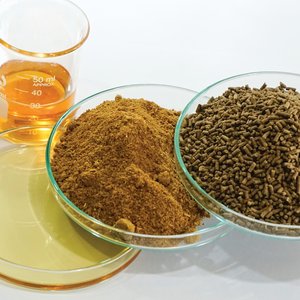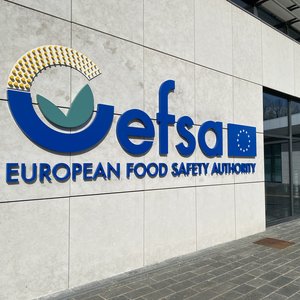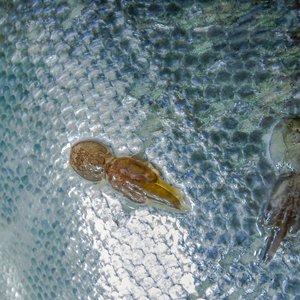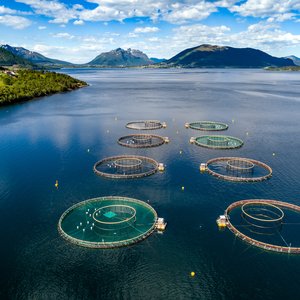The National Grain and Feed Association (NGFA) says it would be “prudent and preferable” for the Food and Drug Administration (FDA) to await the results of the U.S. government’s expanded inspection of the U.S. cattle herd before making substantive changes to the agency’s existing animal feed rules that are designed to prevent the establishment or spread of bovine spongiform encephalopathy (BSE).
However, the NGFA said that if the agency decides to proceed before such surveillance data are available, it would be advisable for FDA to propose the removal of brain and spinal cord of cattle 30 months or older from all animal food and feed as the “centerpiece” of a systems-based approach – instead of pursuing its plan to implement a ban on all so-called “specified risk materials” (SRMs). The NGFA said a full SRM removal at this stage would represent a “Draconian” approach that “could force a dramatic restructuring of an entire industry sector and impose adverse economic and environmental impacts that ultimately may prove to be unwarranted.”
The U.S. Department of Agriculture is in the midst of an enhanced surveillance program in which approximately 268,000 cattle are expected to be tested for BSE by the end of 2005 to better determine the prevalence of BSE if it exists in the native U.S. herd. USDA’s surveillance is designed to enable the department to detect BSE even if it exists in only five cattle in the entire U.S. cattle herd. To date, the only two cases of BSE detected in North America have occurred in Canadian-born cattle born before both countries implemented their BSE-prevention feed rules in 1997.
In a comprehensive 25-page statement submitted to FDA, the NGFA said it believed that a ban on brain and spinal cord from cattle 30 months or older, coupled with compliance with FDA’s existing BSE-prevention feed rule and the removal of certain dead stock from the feed chain would provide protection that is equivalent to a full SRM ban in protecting animal health. The NGFA cited scientific evidence that the brain and spinal cord of cattle 30 months or older carry upwards of 90 percent of total infectivity in cattle nearing the clinical onset of the disease.
Established in 1896, the NGFA consists of 1,000 grain, feed, processing, exporting and other grain-related companies that operate about 5,000 facilities that handle more than two-thirds of all U.S. grains and oilseeds. With more than 350 member companies operating commercial feed mills and 30 integrated livestock and poultry feed manufacturing operations, the NGFA is the nation’s largest trade association representing feed manufacturer interests.
In an advance notice of proposed rulemaking published July 14, FDA said it had “tentatively concluded” to propose later this year a ban in all animal food and feed of the use of all SRMs, as well as dead and non-ambulatory (“downer”) cattle, as a way to “adequately control” the risk of potential cross-contamination of these materials in ruminant feed. FDA said it was planning to define as SRMs the same list of materials banned earlier this year in human food by USDA’s Food Safety and Inspection Service. Those materials include the skull, brain, trigeminal ganglia, eyes, vertebral column, spinal cord and dorsal root ganglia (nerve endings attached to the spinal cord) of all cattle 30 months or older, as well as the small intestines and tonsils of cattle of all ages.
If FDA decides to proceed with changes to its BSE-prevention feed rules before USDA’s surveillance is completed, the NGFA said, “proposing a ban on brain and spinal cord of cattle 30 months or older would more justified and appropriate than a full SRM ban based upon the North American experience, in which BSE-prevention firewalls were implemented decades before the first case was diagnosed and the existing BSE-prevention feed regulations enjoy unprecedented compliance exceeding 99 percent.” The NGFA also cited several scientific studies – including the landmark analyses conducted by the Harvard Center for Risk Analysis – that have found the risk of BSE in the United States to be extremely low.
The NGFA urged that FDA contract with the Harvard Center for Risk Analysis to quantify the additional BSE risk-mitigation that would result from a “policy menu whose centerpiece” is a ban on brain and spinal cord from cattle 30 months or older, combined with the existing BSE-prevention feed rules and the level of compliance with those regulations that far exceeds what Harvard projected in its original 2001 study. FDA officials have stated publicly that compliance with its BSE-prevention feed rule has been “exceptional,” exceeding the levels achieved for any other FDA regulation.
The NGFA also stressed that human health already has been protected by actions previously implemented by USDA and FDA. Those actions include a ban on all SRMs from human food, dietary supplements and cosmetics, as well as prohibitions on certain slaughter-stunning practices. “We do not minimize the importance of taking prudent and responsible regulatory action when it comes to preventing the establishment or spread of BSE in the United States to protect animal health,” the NGFA said. “But those who argue it is urgent for FDA to amend its BSE-prevention feed rule to protect human health are at best misguided, misled and wrong. Human health already has been protected.”
Further, the NGFA said that waiting for the results of USDA’s cattle inspection program would be consistent with the approach recommended by an international review team of scientific experts that investigated the two North American cases of BSE. That team’s report stated that removal of SRMs from human food was a “reasonable temporary compromise” if the U.S. implemented enhanced surveillance to determine the prevalence of BSE in the U.S. cattle herd.
The NGFA also reiterated its support for the continued use of animal proteins – including ruminant-derived material – as safe, nutritious and wholesome feed ingredients for species for which they are legally approved, and as an environmentally and economically sound practice.
Concerning other aspects of FDA’s rulemaking, the NGFA recommended that FDA not require feed mills that manufacture feed for multiple species, including ruminants, to use dedicated plants, equipment, production lines and transportation if they handle mammalian-based feed ingredients prohibited from being fed to cattle or other ruminants. While the NGFA recommends dedicated facilities as a voluntary best-management practice for feed mills, it noted that it is impractical for some facilities, which have chosen instead to use the clean-out procedures authorized by FDA under its 1997 BSE-prevention feed rule.
But the NGFA said FDA should consider requiring dedicated equipment for rendering establishments that currently process animals from multiple species, including ruminants, and which also manufacture and distribute feed ingredients for ruminants. “It is this sector of the industry – the ‘top of the pyramid’ – where the potential for cross contamination and potential adverse consequences for down-stream users is greatest,” the NGFA said. Using FDA’s BSE inspection database, the NGFA estimated that of 148 rendering firms that process material from multiple species, including ruminants, 53 also manufacture and distribute feed ingredients for ruminants. FDA’s database does not report the volume of meat-and-bone meal produced by those 53 firms.
In addition, the NGFA strongly opposed banning all mammalian and avian meat-and-bone meal from ruminant feed, noting there was no scientific justification for doing so. Likewise, the association said it was not aware of any scientific evidence that would justify banning bovine blood and blood products from ruminant feed.
The NGFA also reiterated its support of strong, government-based inspection and enforcement of FDA’s existing BSE-prevention feed rule, which since 1997 has prohibited the feeding of certain mammalian material to cattle and other ruminants. In this regard, the NGFA said it does not support the U.S. government requiring the use of – or relying in lieu of government oversight upon – non-governmental, third-party certification of regulated facilities or feed products for compliance with the BSE-prevention feed rule.
Further, the NGFA recommended that FDA consider requiring establishments that utilize mammalian material prohibited from being fed to cattle or other ruminants – and which also manufacture ruminant feed or feed ruminant animals – to register with the agency. But the NGFA stressed that such registrations should be considered only if doing so would enhance the agency’s trace-forward inspections, in which FDA and state feed control agencies focus inspection resources on those facilities that actually use prohibited mammalian material as a feed ingredient and also manufacture feed for ruminant animals.
The NGFA’s membership encompasses all sectors of the industry, including country, terminal and export elevators; feed manufacturers; cash grain and feed merchants; end users of grain and grain products, including processors, flour millers, and livestock and poultry integrators; commodity futures brokers and commission merchants; and allied industries. The NGFA also consists of 35 affiliated state and regional grain and feed associations, as well as two international affiliated associations. It has strategic alliances with the Pet Food Institute and the Grain Elevator and Processing Society, and is collocated and has a joint operating agreement with the North American Export Grain Association.
Send comments on this story to: editor@aquafeed.com










